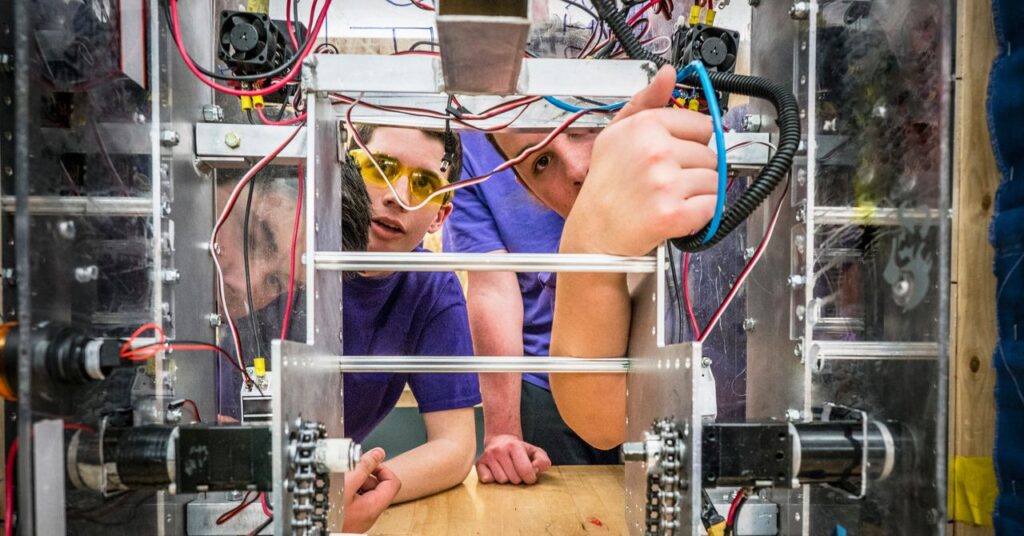AI is Transforming the Curriculum for High School STEM Students.

In the early 2010s, the common advice for college-bound students with an interest in STEM was clear: learn to code. Python emerged as the new Latin, with computer science seen as the gateway to a secure, lucrative, and future-proof career.
However, by 2025, that enthusiasm has waned. The phrase “learn to code” now resonates similarly to “learn shorthand.” While teenagers still aspire to work in tech, they recognize multiple pathways to achieve that goal. With AI threatening to take over coding jobs, and limited AP classes focusing on creative aspects of coding, educators are racing to adapt.
“Students are shifting from maximizing their computer science courses to focusing on acquiring as many statistics classes as they can,” explains Benjamin Rubenstein, an assistant principal at Manhattan Village Academy in New York. Having spent two decades in New York City classrooms, Rubenstein has observed the transformation of the “STEM pipeline” into a complex network of varied routes rather than a singular direction. For his students, studying statistics seems more applicable.
Four decades ago, students captivated by NASA aspired to be physicists or engineers. Two decades later, the excitement surrounding tech giants like Google drew them into computer science. Today, their aspirations are influenced by AI, prompting them to shift away from tasks easily handled by AI (such as coding) and toward areas where AI still faces challenges. As the pursuit of computer science degrees declines, high schoolers interested in STEM are exploring fields that integrate computing with analysis, interpretation, and data.
Rubenstein mandates that every student take computer science before graduation “to help them grasp what happens behind the scenes.” However, his school’s math department has paired data literacy with real-world applications: an Applied Mathematics class where students evaluate data from the New York Police Department to suggest policy modifications, and an Ethnomathematics course that connects mathematics to culture and identity. “We aim to ensure math feels relevant to everyday life,” he states.
This small yet significant shift, according to Rubenstein, is not occurring in a vacuum. Following an extended period of growth, universities are witnessing a slowdown in the surge of computer science enrollments. A survey by the Computing Research Association indicates that the number of degrees in computer science, computer engineering, and information awarded in the 2023–2024 academic year in the US and Canada decreased by approximately 5.5 percent compared to the previous year.
At the high school level, the demand for data-oriented education is apparent. AP Statistics recorded 264,262 exam registrations in 2024, making it one of the most sought-after AP exams, according to Education Week. AP computer science exams maintain strong participation—175,261 students registered for AP Computer Science Principles, while 98,136 took AP Computer Science A in 2024—but the trend is evident: data literacy is now positioned equally with coding, rather than subordinate to it.
